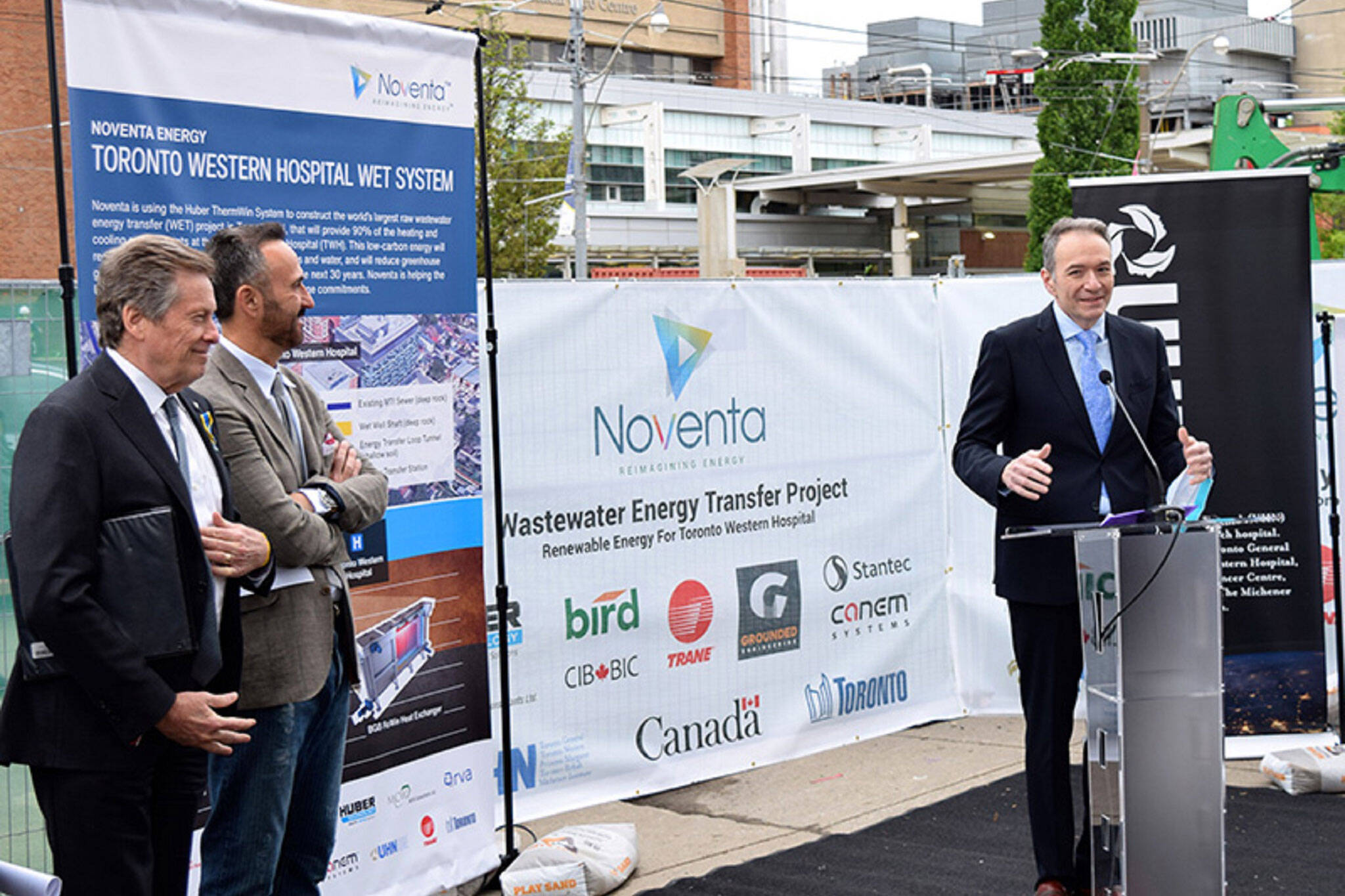
Toronto hospital is building a record-breaking system powered by poopy water
Toronto is all about breaking records, like the world's tallest structure (at least for a while,) and now we can lay claim to ownership of the world's largest project utilizing disgusting sewage to help save the planet.
Gross, I know, but let me explain.
Wastewater is good for more than just identifying new viral outbreaks and the drug habits of populations. Despite its dirty nature, it can also create clean energy and help reduce emissions.
Working with partners Noventa Energy Partners and the City of Toronto, Toronto Western Hospital just embarked on the world's largest raw wastewater energy transfer project, an enormous $38 million undertaking funded in part by the Government of Canada.
Shovels hit the ground in a ceremonial ground breaking on Monday, putting the wheels in motion for the energy-conscious endeavour known as the wastewater energy transfer (WET) system.
We're breaking ground this morning on the world's largest raw wastewater energy transfer (WET) System going in at Toronto Western Hospital!
— University Health Network (@UHN) June 6, 2022
The WET System will use thermal energy from a municipal sewer to supply 90% of our heating/cooling - cutting GHGs by 10K tonnes every year! pic.twitter.com/C3GYfLQQak
Crews will bore a massive hole measuring 35 feet wide by 165 feet deep to construct an energy transfer between wastewater flowing through the Midtown sewer and heat pumps, using the heat energy from wastewater to efficiently heat and cool the hospital.
The WET system will separate solids at the sewer level, allowing sieved but probably very smelly wastewater to be pumped into sealed, self-cleaning heat exchangers.
And while filthy wastewater is indeed involved, the system's method of indirect transfer means nobody will ever have to smell the nasty origin of the hospital's new energy source.
Over the next three decades, the system is anticipated to supply 1.8 billion kilowatt-hours of energy to the hospital, fulfilling approximately 90 per cent of Toronto Western's space heating and cooling requirements.
During this time, the system will cut down on the hospital's carbon dioxide emissions by 250,000 tonnes, its operation equivalent to taking over 1,800 cars off the road every year for 30 years.
It will save the hospital over 141 million kilowatt-hours of electricity, 130 million cubic meters of natural gas, and 1.3 billion litres of cooling water, which is enough to fill 520 Olympic-sized swimming pools.
Latest Videos
Latest Videos
Join the conversation Load comments







